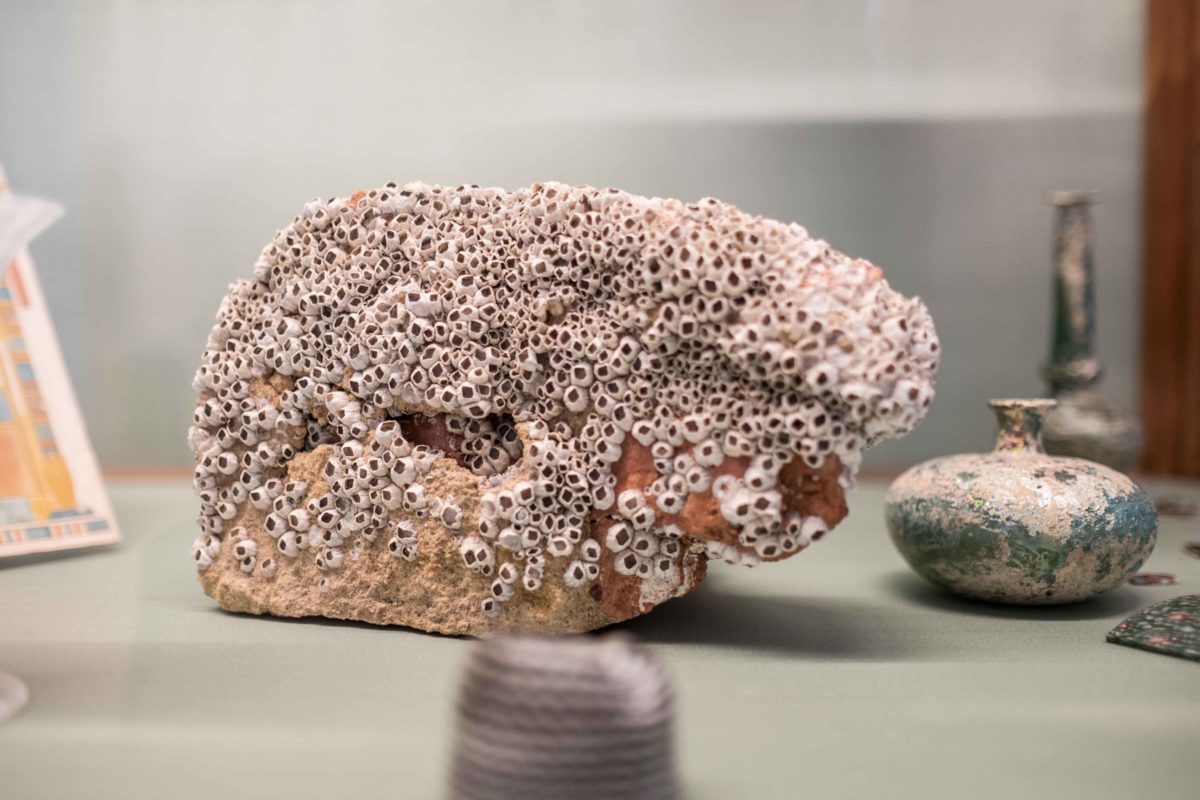Buoy with barnacles

Buoy with barnacles, collected by Charles Lim Yi Yong, Singapore, 2017.
Courtesy of Johann Jacobs Museum
What at first looks like a modern sculpture, turns out to be a buoy (made of Styrofoam) upon closer inspection. Besides its purpose, this buoy fulfills another function: it forms the home of countless barnacles. Barnacles are not just any animal, but have made history. On the one hand, they inspired Charles Darwin’s theory of evolution. For another, they could decide the race for global naval supremacy between England and France. As one can see from the buoy, the barnacle has no mercy for surfaces that lie under water. It attaches itself with a kind of cement to just about anything, be it rocks, ship hulls or even buoys. The cement can hardly be loosened. Ships infested by the barnacle lie deeper in the water and become increasingly unmaneuverable – a particularly devastating fate for warships and merchant vessels.
Clever Britons, however, came up with an antidote early on: Copper fittings. Toxic copper oxide deters the barnacle. The buoy is a souvenir of Charles Lim Ye Yong. It comes from Singapore, the tiny city-state at the entrance to the Strait of Malacca, the main shipping passage between Asia and Europe. Singapore is a colonial foundation of the British.